Handball is a sport that involves physical, technical and mental skills. And as with any team sport, there are systems of play.
In this article, we’ll introduce you to some of the main handball tactics, such as defense, attack, transition and positioning on the court.
We’ll also look at how these tactics relate to the rules, principles, fundamentals and objectives of the sport.
The aim is to provide an overview and guidance for those who want to learn more about this dynamic and exciting sport.
Check it out 👇
Handball tactics – What are they?
Before understanding each system separately, you need to understand what handball tactics are. That way, you’ll have a better understanding of the subject.
Handball tactics are methods of positioning on the court, i.e. systems that will establish what each player will do in the match.
Tactics are basically divided into two types: offensive and defensive. The first type establishes the attacking position and determines how plays will be constructed. The second designates the type of marking.
Each tactic has strengths and weaknesses. There isn’t one that is better than the other. It all depends on the qualities of the players and what they, as a team, feel most comfortable doing.
Tactics can also vary according to the context of the match. Some formations, for example, are better for those who are behind and need to score. Others are for exploiting counter-attacks.
That’s clearer, isn’t it? Now let’s break down each of the handball tactics, dividing them into defensive and offensive systems.
Handball defensive formations
- Formation 6-0
- Formation 5-1
- Formation 4-2
- Formation 3-3
- Formation 3-2-1
Defensive formation 6-0
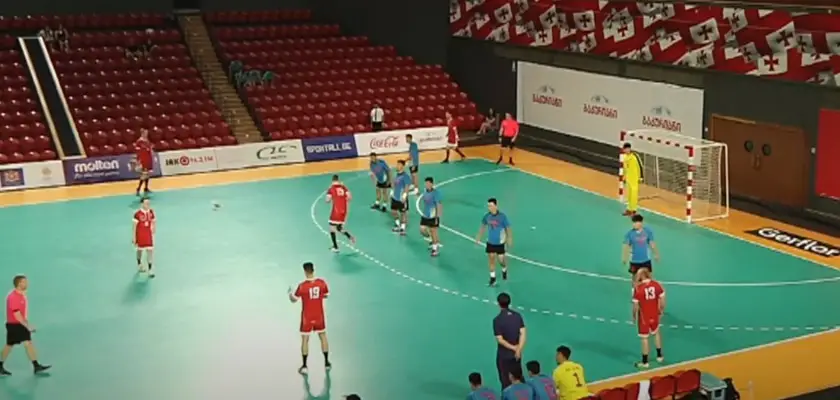
The 6-0 system is one of the most widely used defensive handball tactics in the sport. In it, all the players stand in a single line.
The aim is to close off the entire perimeter in front of the goalkeeper’s area and block infiltrations from both the winger and the pivot.
The marking balance is made according to the movement of the opposing ball, i.e. from left to right or vice versa.
This formation, however, has two weaknesses: it allows for medium-distance shots and doesn’t provide a chance to steal the ball.
Defensive formation 5-1
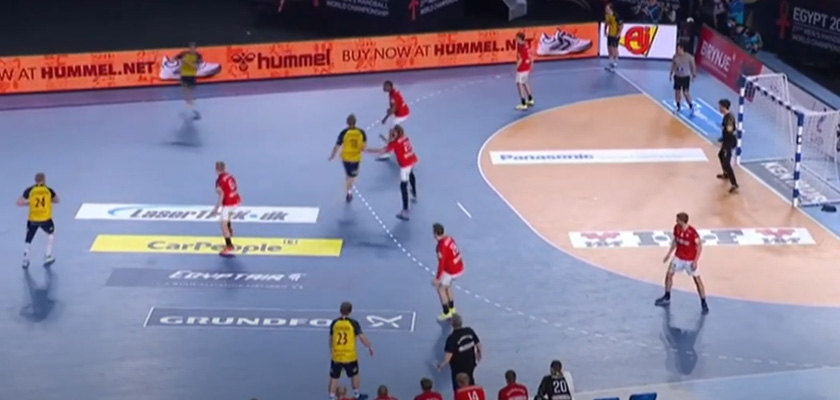
The 5-1 system is also widely used in professional matches. In this system, we have two lines of marking: five players protecting the goalkeeper’s area and a “joker” floating on the 9-meter line.
Compared to the 6-0, this formation leaves more space for opponents to infiltrate. However, it is good for intercepting passes and initiating counter-attacks.
The player in the forward line needs to be quick and tough, as he will be moving around all the time – always looking for gaps to steal balls, block mid-range shots or get in the way of the pivot.
Defensive formation 4-2
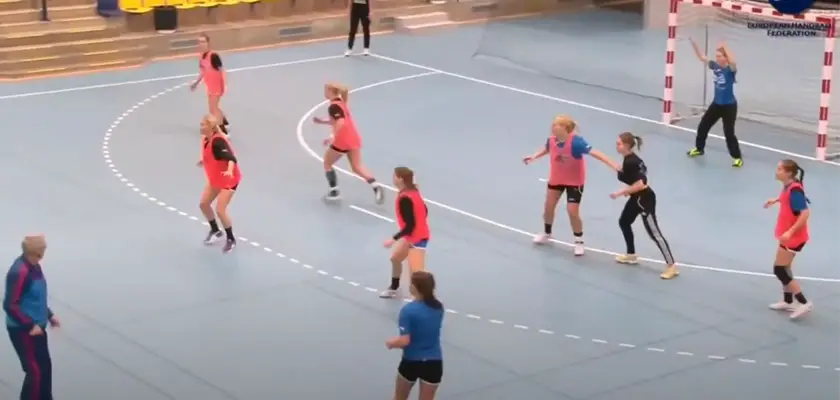
The 4-2 system consists of two lines: two players stand on the 9-metre line while the rest stand behind them.
In this formation, the two lines move laterally to mark the opposition’s passing movement. It is excellent for marking teams that play with two good long-range shooters.
This tactic, however, is not very suitable for marking the 3-3 attacking system, as the spaces left between the lines will be used by the opposition.
Defensive formation 3-3
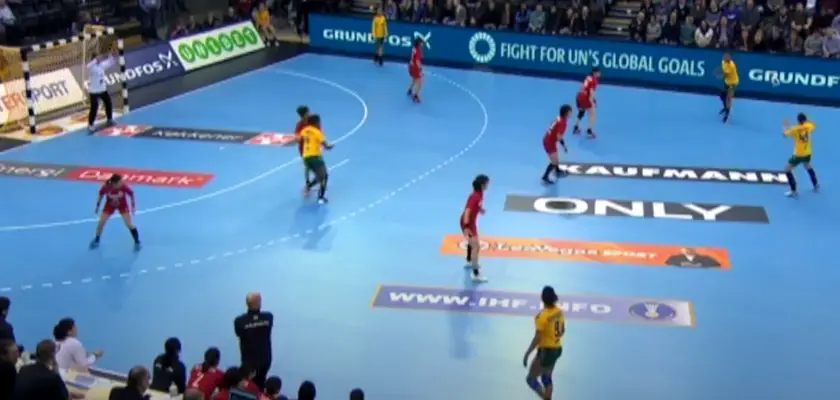
The 3-3 system is the most aggressive defensive scheme in handball, as it operates with two lines of three players. Half the team is floating on the 9-meter line and the other half behind.
It’s a formation used by those who are behind and want to score quickly, as it allows for a lot of interceptions and steals. If possession is regained, the counter-attack is usually fierce.
On the other hand, it allows for a lot of infiltration by opponents, both pivots and winger, because whoever is marking at the back will find it very difficult to cover who is in front.
Defensive formation 3-2-1
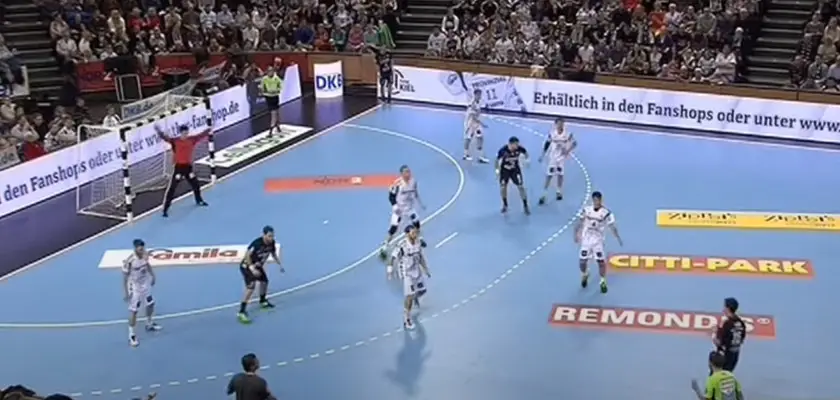
Finally, we have the 3-2-1 defensive system, which is one of the most flexible and adaptable handball tactics in the sport.
In this scheme, the players are positioned in three lines: one protecting the goalkeeper’s area (three players), an intermediate line (two players) and a more advanced line at the 9-meter line (one player).
This system requires a lot of physical effort and can easily tire players out. However, it is extremely versatile, allowing the team to change defensive formation in the middle of the opposition’s play if they see fit.
Handball offensive formations
- Formation 6-0
- Formation 5-1
- Formation 4-2
Offensive formation 6-0
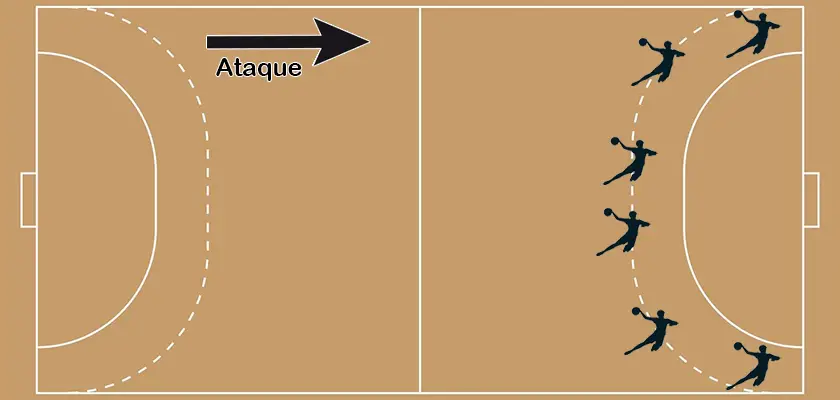
Among the offensive handball tactics, the 6-0 system is the simplest and easiest to execute. In it, the players form a single line on the court.
The players then move synchronously outside the 9-meter line until they find a gap to finish, either in the middle or at the ends.
The team positions itself on the court with two central midfielders, two wingers and two wingers, i.e. without a pivot. For this reason, the 6-0 is not often used in professional matches.
Offensive formation 5-1
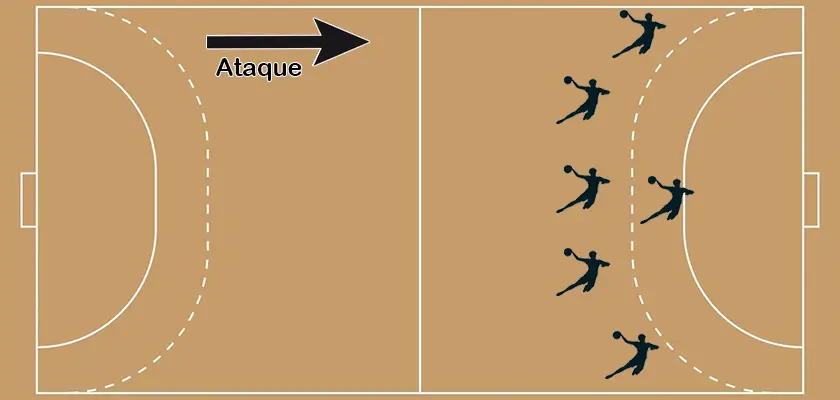
The 5-1 offensive system is the most popular in handball. In this scheme, we have a line of five players made up of two wingers, two wingers and a central midfielder, as well as a pivot floating in the middle of the opposing defense.
This tactic makes it possible to build up a lot of play. The midfielders can shoot from the middle of the court, the wingers can cut in from the flanks and the pivot can find spaces to infiltrate.
Offensive formation 4-2
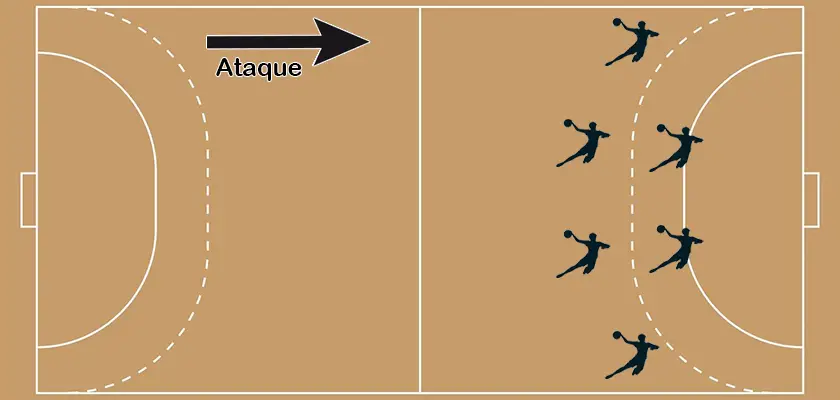
The 4-2 system is a variation on the 5-1, but with two pivots circulating in the middle of the defenders. Behind them are two winger and two playmakers.
Although it’s a very attacking tactical design, which means it’s excellent for finding goals quickly and lethally, it’s vulnerable to counter-attacks.
As the two pivots work close to the goalkeeper’s area, it will take them longer to get back and recompose the defense.
Now you know the main handball tactics! Which formation is your favorite? Let us know what you think in the comments 🙌
And if you want to check out other content about Olympic sports, you already know, right? Just visit us every day! We’re supplying the site with complete and up-to-date content every morning.



